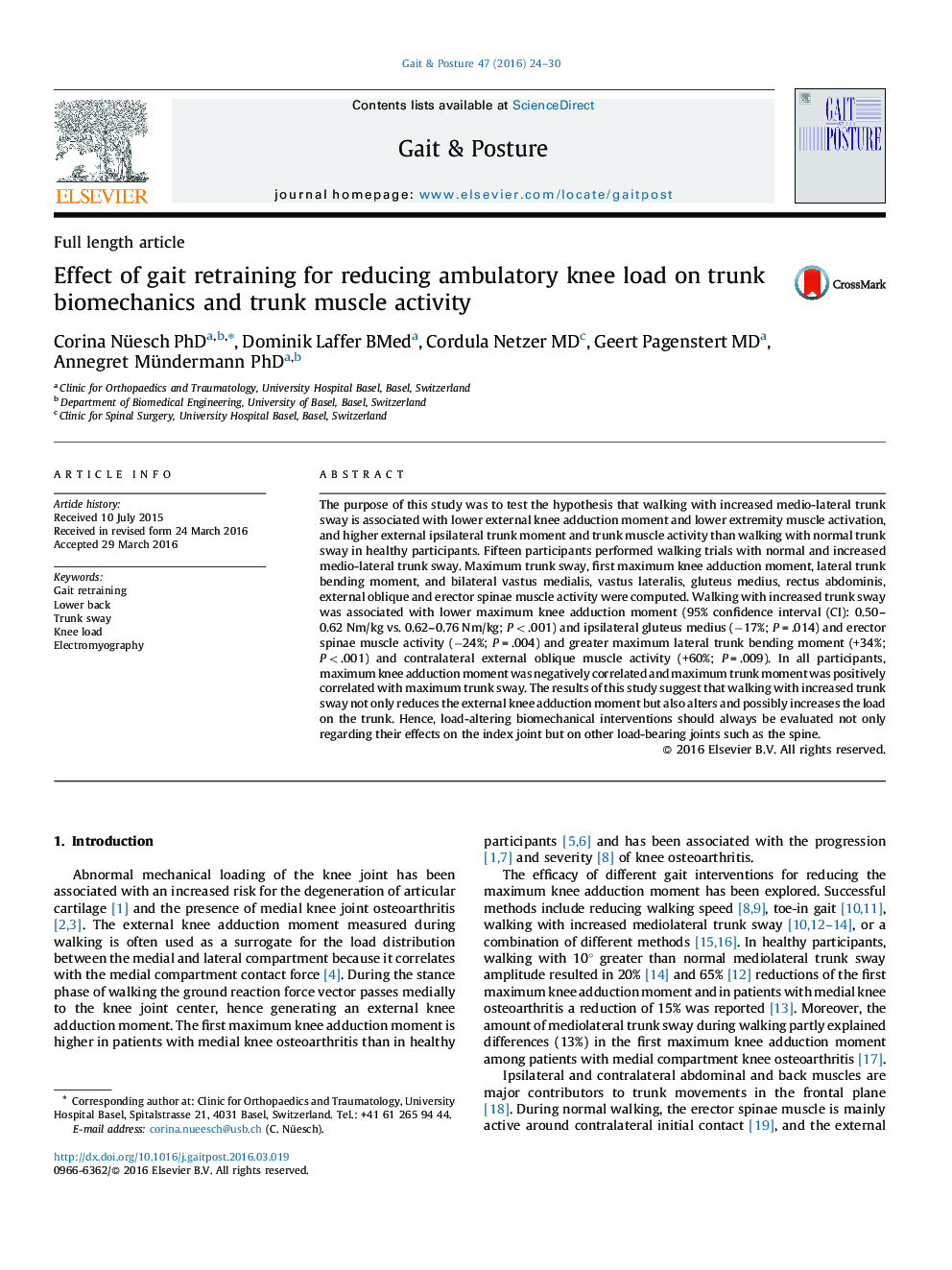| کد مقاله | کد نشریه | سال انتشار | مقاله انگلیسی | نسخه تمام متن |
|---|---|---|---|---|
| 6205875 | 1603848 | 2016 | 7 صفحه PDF | دانلود رایگان |
- We investigated changes in trunk loading due to walking with increased trunk sway.
- Walking with increased trunk sway led to a higher ipsilateral trunk bending moment.
- Increased trunk sway led to increased contralateral external oblique activity.
- Ipsilateral gluteus medius and erector spinae activity were reduced.
- Walking with increased trunk sway decreased the maximum knee adduction moment.
The purpose of this study was to test the hypothesis that walking with increased medio-lateral trunk sway is associated with lower external knee adduction moment and lower extremity muscle activation, and higher external ipsilateral trunk moment and trunk muscle activity than walking with normal trunk sway in healthy participants. Fifteen participants performed walking trials with normal and increased medio-lateral trunk sway. Maximum trunk sway, first maximum knee adduction moment, lateral trunk bending moment, and bilateral vastus medialis, vastus lateralis, gluteus medius, rectus abdominis, external oblique and erector spinae muscle activity were computed. Walking with increased trunk sway was associated with lower maximum knee adduction moment (95% confidence interval (CI): 0.50-0.62Â Nm/kg vs. 0.62-0.76Â Nm/kg; PÂ <Â .001) and ipsilateral gluteus medius (â17%; PÂ =Â .014) and erector spinae muscle activity (â24%; PÂ =Â .004) and greater maximum lateral trunk bending moment (+34%; PÂ <Â .001) and contralateral external oblique muscle activity (+60%; PÂ =Â .009). In all participants, maximum knee adduction moment was negatively correlated and maximum trunk moment was positively correlated with maximum trunk sway. The results of this study suggest that walking with increased trunk sway not only reduces the external knee adduction moment but also alters and possibly increases the load on the trunk. Hence, load-altering biomechanical interventions should always be evaluated not only regarding their effects on the index joint but on other load-bearing joints such as the spine.
Journal: Gait & Posture - Volume 47, June 2016, Pages 24-30
